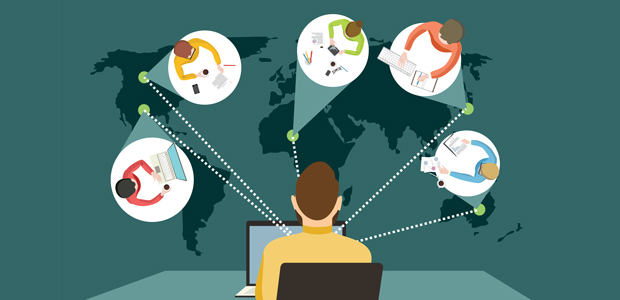
How the reality of work is changing, and what employers need to do about it
We’ve all seen such a huge upheaval for many organisations in the way they work, that it’s tempting to think that everyone was operating in traditional environments – think nine to five, fixed office, company-issued IT – right up until March 2020.
However, despite the almost continual chatter over the last few months of how we’re entering a new world of work, the pandemic and its restrictions did not actually introduce anything new; they merely accelerated it, on a scale and at a pace no one could have foreseen.
So, in many ways it is less that there has been a change, and more that the change has happened so quickly.
As it is, many leaders have been left with having to recalibrate their approach to feedback and management, while still dealing with the spectre of the pandemic and its threat to business continuity. In the early months, it was perhaps acceptable to allow certain elements of management, such as employee appraisals, to slip. Now, as what was once new becomes normal, this has to be addressed. Why? Because at a time when revenue streams are crumbling, engaged employees are critical in delivering results – one study found that “highly engaged teams show 21% greater profitability”.
Five steps changing the reality of work
Employers therefore need to balance keeping employees engaged with a number of realities which are rapidly changing what we thought the future of work would be. It can be bewildering and confusing; it is certainly happening. What then do managers need to be aware of as they try to recalibrate in the face of constant disruption?
- Remote working is here to stay: Firstly, they need to realise that rolling lockdowns and local restrictions are going to be a short-term constant. Some employees have embraced it; others will feel more removed and under greater stress. It will be up to leaders to identify and address these polar opposites within their own teams.
- Technology is only going to get more pervasive: Those businesses that were more digitally mature fared better in the early stages of lockdown; as everyone races to complete their own digitisation, employees are going to be faced with a continuous cycle of change. What’s more, while the process of transformation has never been this fast, it will also never be this slow again. That is a bewildering concept, and one that managers need to factor in when handling employees.
- The employer-employee contract has irrevocably changed: This is not the terms of employment; rather it is the mutual understanding that the employee will perform tasks as designated by the employer in return for renumeration and adequate support. It used to be about everything happening in a set place, for a set amount of time. Now that isn’t the case. That means the old ways of managing, of supporting employees and of helping them develop don’t work, so new approaches to employee development and support need to be delivered in order for employers to meet their obligations.
- Monthly one-to-ones are not enough: The informal chats in the kitchen or between meetings, the gold dust of successful light-touch leadership and pastoral care, are gone. Calendar-driven meetings are suddenly too far apart to get a true sense of how employees are doing, both in terms of their performance and how they are feeling.
- Move from inputs to outputs: It all adds up to needing a change in the focus, away from what employees are doing and towards what they are producing – so from inputs (such as being ‘in work’ at a certain time and for a set number of hours) to outputs. It is a shift towards a more continuous cycle of review and feedback, and it is two way – rather than having a set meeting, both employer and employee are sharing outputs, progress and feedback constantly. In doing so, employees can start to be measured on how they are contributing to the performance of the business, and their training and development tailored accordingly.
As the way we work has changed, so our relationship with work, in the form of the employer-employee contract, is changing too. Businesses setting themselves up for an uncertain future need to reassess and realign how their employees are working, and tailor the way teams are managed and supported accordingly. It is the only way employers will be able to retain and develop their workforces to handle whatever comes next.

